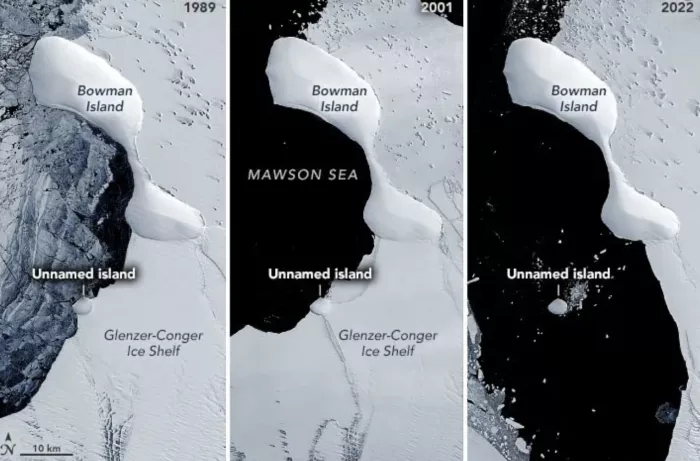Scientists have found that an unnamed pile of clay off the eastern coast of Antarctica appears to be an island The eastern coast of Antarctica has lost most of the grunze and kange ice shelves. In the process, it acquired something that might be an island. If confirmed, the unnamed island will be one of a series of Islands exposed in recent years, as part of the floating glacier embracing the mainland coast has disintegrated.
The candidate islands are visible in the above-mentioned triple images collected by Landsat satellite from 1989 to 2022. These images are a combination of short wave infrared and visible light, and adjust the brightness and color. Even after the rapid collapse of the Grenze and kange ice shelves earlier this year, the large iceberg may have hit the round white hill, and it has not moved.

This feature also looks higher than its surroundings. The elevation profile below shows that at least some of the ice is 30 to 35 meters (100 to 115 feet) above the sea surface. These data were obtained by the advanced terrain laser altimetry system (Atlas) on NASA's icesat-2 on December 22, 2021.
But just because it looks like an island doesn't mean it's an island. Scientists are still not sure whether any solid objects under the ice and snow have broken through the sea surface. John Gibson, a scientist at the Australian Antarctic Division, believes that this feature is likely to be an Iceland, with a huge, heavy ice cap firmly seated on an underwater peak. It is undoubtedly similar to other Iceland, such as Bowman island.
The ice and snow accumulated on the surface of the island offset the amount of melting that occurred underwater. If this balance is undermined by reduced snowfall, Iceland could become thinner and float. The unnamed island may one day separate from the underlying rocks and become an iceberg. Since no one has been there to observe the island, questions about its structure remain. To be absolutely sure, you need to put a ship next to it to check the outcrop of bedrock, and maybe put a radar on it to evaluate the thickness of ice.